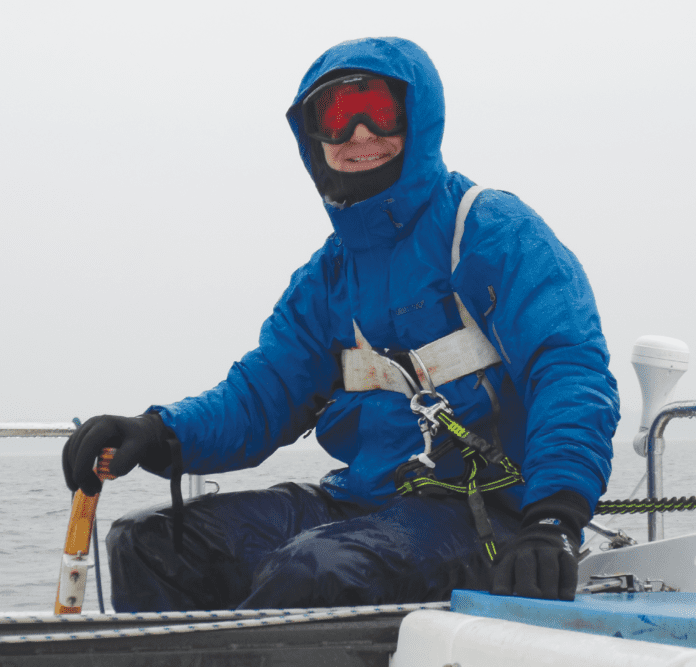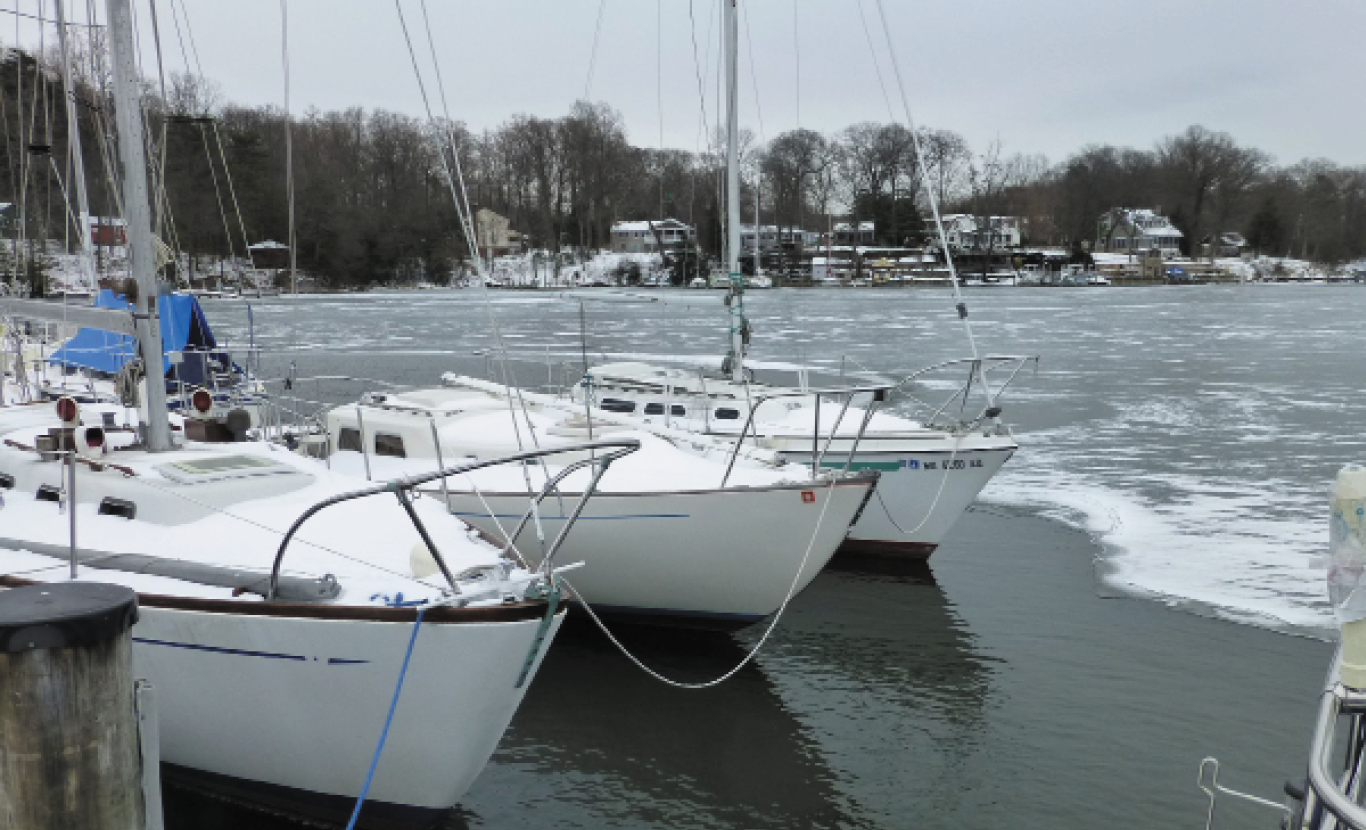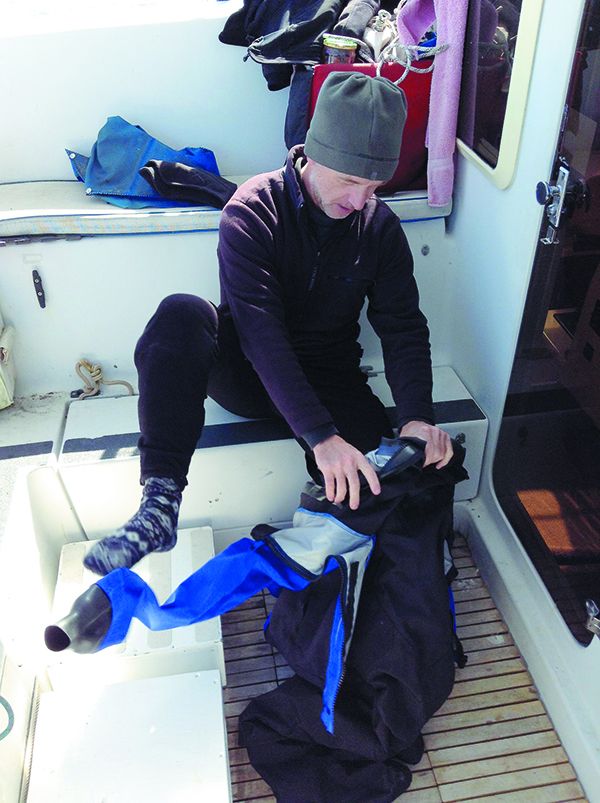
As temperatures on Tampa Bay area dip into a bone chilling 49 degrees this morning, I again find myself sympathizing with my friends in northern latitudes who must bring their sailing season to an end — or do they? So long as the water hasn’t turned to ice (and even if it has, if you are an avid ice boater), sailors will find a way to get out on the water.
Fortunately for Practical Sailor readers, we have our own Dr. Chill to keep us informed on ways to stay floating through the winter. With two engineering PhDs, an insatiable curiosity, and a lifetime of sailing on a very tight budget, Technical Editor Drew Frye is an invaluable resource on affordable winter sailing. (I should also mention that he’s an avid ice-climber.) Over the 17-plus years he has been testing for Practical Sailor, a wealth of winter sailing knowledge has trickled into our pages. In this post, I’ll share more than a dozen links to articles that will keep you toasty this winter on the water.
Some of our reports go back quite a while, but when it comes to staying warm the principles don’t change. Products come and go, but the physics behind Drew’s research offers a timeless foundation for sailing through the depths of January.
The past several winters, Drew has focused on specific measures to take if you plan to extend your sailing in areas that see near freezing temperatures (see Winter Sailing Tips for Diehards and Trouble-free Winter Sailing). It is something Drew himself has done for more than a decade on Chesapeake Bay, where winters, though hardly as brutal as those in Minnesota, still drive many boaters away from the water.

Drew’s reporting on winter goes well beyond the normal scope of season-themed articles. Most recently, he brought his testing experience to bear on bubblers and other devices that keep marina slips ice-free through to spring. Drew was also the brains behind our comprehensive reports on coolants and anti-freeze, and how their improper use can actually promote water-tank contamination.
Drew’s climbing habit routinely makes its way into Practical Sailor’s pages. Since frozen ropes are as useless to sailors as they are to climbers, he is of course concerned with ways to keep water out of ropes. He landed on a couple of good products in his report Treatments to Preserve Ropes and Lines through the Seasons. His research into fiber lifeline chafe and elasticity in deck cordage also drew directly from his own experience with climbing ropes.
A related pursuit that occupies Drew is the endless search for ways to reduce onboard weight. As the owner of an F-24 trimaran, he recognizes that for many sailors, every equipment upgrade presents an irresistible opportunity to shave extra pounds. His report on using high-tech fibers instead of metal shackles is an example of his work in this area.
The inspiration for many of his articles on winter prep, however, has little to do with an interest in ice or saving weight—it was the simple desire to sail year round. One of the finer pleasures of winter sailing is the solitude it affords. As Drew wrote when he first pitched the story:
“It has always seemed a shame to me that the great majority of boats in the country are only used in the summer. Even on the middle-section of Chesapeake Bay, where the water freezes only a few weeks of the year, I have the waters virtually to myself on some of the nicest days.”
If you, too, are considering a winter afloat, our archives have got you covered, especially in the realm of clothing. A keyword search of the relevant categories on the PS website —gloves, socks, boots, foul weather gear, base layers, caps, wet suits, dry suits, survival suits, etc. — will yield the results from specific tests. For example, we recently retested sock (see “Testing Waterproof Socks.”)
But before you dig into the individual bits of apparel, I’d recommend that you first read a report from Drew that takes a broader look at keeping warm. Drew, who keeps his boat sailing all winter on the Chesapeake, has had many cold days to explore the topic in his report, “Sailing Clothes for Cold Weather.”

If you’re planning on living aboard, you’ll also find Drew’s research on heating and insulation to help you make it through the season. Remember, if you want the complete report, it is best to download the PDF for the corresponding issue, which is the month following the “posted” dated. For example, “Playing it Safe with LPG Heat,” posted on November 18, 2015, is available in the PDF download PS December 2015) and “Dirt Cheap Insulation for Liveaboards,” originally posted on December 11, 2017 is available in the PDF version of the PS January 2018).
If you can’t download the PDF, that means you are not a subscriber, and that’s okay. Once you wend your way through our winter reports, I’ll hope you consider subscribing, if only to help keep Drew and his family sailing through the end of March. (In addition to getting our most up-to-date reports, PDF downloads, and a direct line to the editor, paid subscribers also can limit the e-mails you get from us pleading to subscribe. Apologies to those who benefit from Drew’s research without spending a nickel, but, as they say, there is no free lunch. If I could give this stuff away, I would.)
There’s a lot more in the archives on winter sailing, as well as winterizing and storing your boat ashore for the winter. If there’s a particular product you are researching, enter the product and add the word “test” in our search bar (upper right corner of the website) and you’ll usually find what you need (For example: hot water heater test). Using Google, and entering the topic of interest preceded by the words “Practical Sailor” will also work; for example “Practical Sailor hot water heater.”
Now, where did I put my fleece jacket?




































Last article I found on PLB is 2008. Technology has changed and think it would be worthy to review current PLB technologies. Am getting my wife an ACR PLB for Christmas – am sure like-minded sailors would appreciate a current review of the tech.
Thx – doug